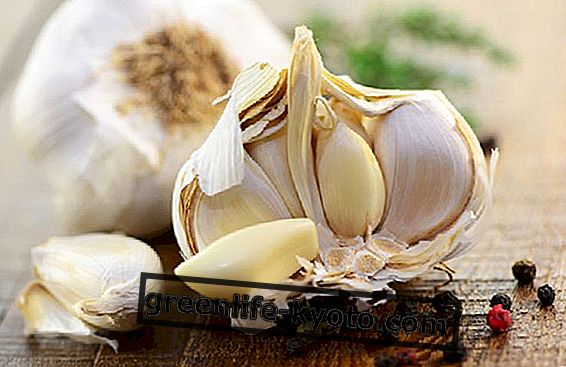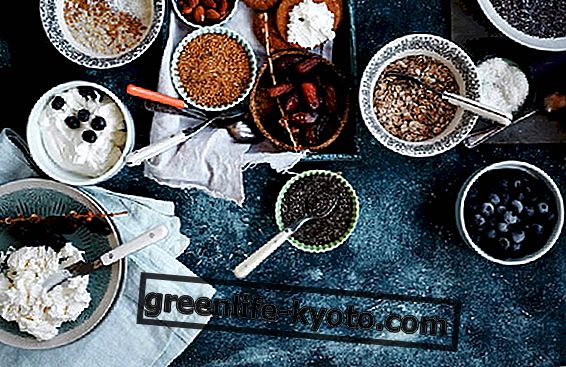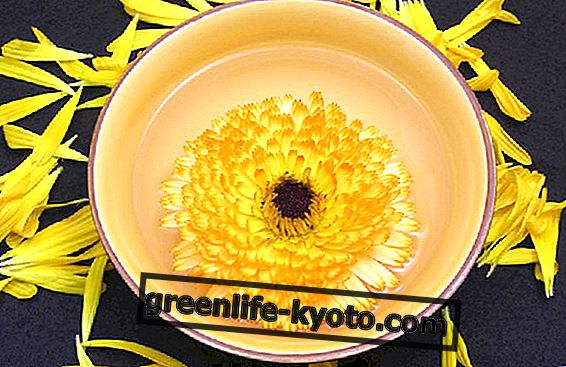Cereals: a complete list of the types of cereals, their properties, nutritional values, recipes for cooking them.
For cereal we mean every herbaceous plant belonging to the Gramineae family that produces starchy, mealy, edible seeds - defined kernels but commonly and improperly called "seeds or grains" - used both in human and animal nutrition and from which it is obtained flour (from the Latin cerealis "relevant to the goddess Ceres"). Let's find out better.

Cereals, what they are and what they are
Cereals are among the most cultivated in the world (8700 species) and their diffusion depends on various factors such as the ability to adapt to different environmental conditions (deserts, wet and fresh water environments), the ease of preservation of the dry product, the high digestibility, the neutral taste that can be combined with many other flavors, the possibility of being consumed as such or processed (you can consume whole, floured, sprouted, etc.), from the low demand for labor and the possibility of mechanization of the crop itself.
In the world cereals occupy about 50% of arable land and are cultivated on all continents. In Italy they cover 45% of arable land.
The most important and widespread species of cereals are:
- the Wheat Triticum spp. ;
- the Rice Oryza sativa ;
- the Barley Hordeum vulgare ;
- the Mais Zea mays ;
- Oats Avena spp . ;
- the Sorghum Sorghum vulgare ;
- the Secale cereale .
The structure of cereals
The fruit of the cereals is the caryopsis, an indehiscent dry fruit that has the characteristic of being firmly grown with the seed, so that fruit and seed constitute a single body.
All cereals have a similar structure, divided into three parts: the starchy and protein endosperm inside, the germ or embryo rich in micronutrients such as B vitamins, vitamin E, antioxidants, phytonutrients and unsaturated fats and the external fiber-rich bran and important antioxidants, which forms a protective layer around the grain.
Usually the indigestible outer layers (lignin and bran cellulose) and some internal parts rich in fats and therefore easily alterable (germ) are removed from the cereal kernels, making only endosperm (starch and part of proteins). The degree of separation of the various components of the caryopsis ( process of sifting or refining ), determines the type of product and its nutritional characteristics.
Much attention on the difference between whole and refined foods has fallen on a series of indigestible polysaccharides of vegetable origin, the dietary fibers, which are normally lost in the refining processes.
Western diets daily introduce 10-15 g of fiber per day, vegetarian 40-50 g. There is still no agreement on the optimal amount of recruitment but many institutions and the WHO recommend a daily intake of 30-45 g per day, that is double or triple the current. Hence the need to consume, in addition to fruit and vegetables, a good portion of whole grains in the daily diet.
Among these, available on the market, we find whole wheat, oats / wholemeal oatmeal, wholemeal corn flour, brown rice, wild rice, wholemeal rye, wholegrain barley, buckwheat, pearly durum wheat, triticale, millet, quinoa, sorghum, spelled and spelled.
Properties of cereals
All grain cereals should be appreciated, valued and used in rotation, as each has specific properties and characteristics. As for vegetables and vegetables, as well as for cereals and starchy foods, the imperative is not to fix only on some, forgetting all the others. In fact, nutritional repetition means limited and monotonous nutritional intake.
Over the last thirty years there has been a profound transformation of the concept of nutrition; in fact, while in the past foods were considered, almost exclusively as indispensable factors for the development and growth of the body, today they are recognized as having a key role in determining the quality of life. The concept of functional foods has thus been developed, that is of foods capable of carrying out, beyond the normal nutritional effects, a beneficial action on one or more functions of the organism, for the improvement of health status. and well-being.
Cereals, always basic products of the Mediterranean diet, can also play an important role in modern society as a raw material for functional foods since they contain some regulatory components of important vital functions, such as fibers, antioxidants, phytosterols, etc., holding the second position in the market segment of so-called functional foods after milk-based products and derivatives.
We know functional foods
On a nutritional level, cereals are an excellent source of energy, being rich in carbohydrates ; they are also a good source of proteins, mineral salts, vitamins and fibers and have a low lipid content. The numerous bioactive compounds are located in different parts of the caryopsis including beta-glucans, lignans, tocotrienols, folates, fructans, phytosterols, polyphenols, polycosanols, phytates, pentosanes, arabinoxylans which carry out numerous biological activities (prebiotic, probiotic, antioxidant, hypoglycemic, hypocholesterolemic, reduction of cardiovascular diseases, colon cancer and neural tube defects) which, using some fractionation and recombination technologies, can be isolated / concentrated in some fractions to be used as ingredients for the development of functional foods.
Cereals are a real source of energy
How to use cereals
All cereals are hardly edible from raw and this is why man has learned to ferment them and / or cook them .
Cereals are mainly used in the kitchen for the production of bread, pasta and flour but also for the preparation, following fermentation, of alcoholic beverages such as whiskey and beer (barley, sorghum), vodka (wheat), American bourbon (rye), Japanese sake (rice).
Grain fermentation causes changes in food quality, including texture, flavor, appearance, nutrition and safety. The advantages of fermentation can include:
- the improvement of palatability and acceptability influencing the organoleptic characteristics (aroma, flavor, color, consistency);
- conservation through acidification and production of antimicrobial compounds, which improve food safety;
- the increase in nutritional value through the synthesis of nutrients by microorganisms;
- improving protein and carbohydrate digestibility ;
- the removal of anti- nutritional substances (phytate, inhibitors of enzymes, polyphenols, tannins) and undesired compounds (endogenous toxins, mycotoxins, cyanogenic compounds, flatulence produced by the presence of carbohydrates).
Find out how to cook cereals!
Important to know that
The only cereals that certainly contain proteins that are harmful to the intestinal mucosa of celiacs are wheat, rye and barley, as well as the result of the wheat-rye crossing known as triticale.
The taxonomy also indicates that all cereals that are included in the genus Triticum and that contain gluten proteins (including gliadin ), by analogy with wheat should be excluded from the diet. Among these we remember especially spelled.
Until recently, oats were also among the foods that were certainly not recommended; more recent studies seem instead to indicate that avenin - a protein structurally similar but not identical to gliadin, may not be harmful for those with celiac disease. The tests that the researchers are collecting in this sense seem to lead to a definitive confirmation of the possibility for the celiac to freely consume foods containing oats.
In reality, however, there are some practical problems; for example, oats can be grown in rotation with wheat or in neighboring fields and there is the risk that the same machinery is used for processing and that storage silos are sometimes common. It is therefore possible to contaminate oats with small amounts of wheat !.
In addition to these more common cereals, there are others of less frequent use which, however, must be avoided. I'm:
- Bulgur : cooked wheat spread in the Middle East
- Cous-cous : Arab dish made with durum wheat semolina
- Kamut : Egyptian wheat
- Spelta : spelled variety
- Seitan : derives from wheat gluten, very common in oriental cuisine.













